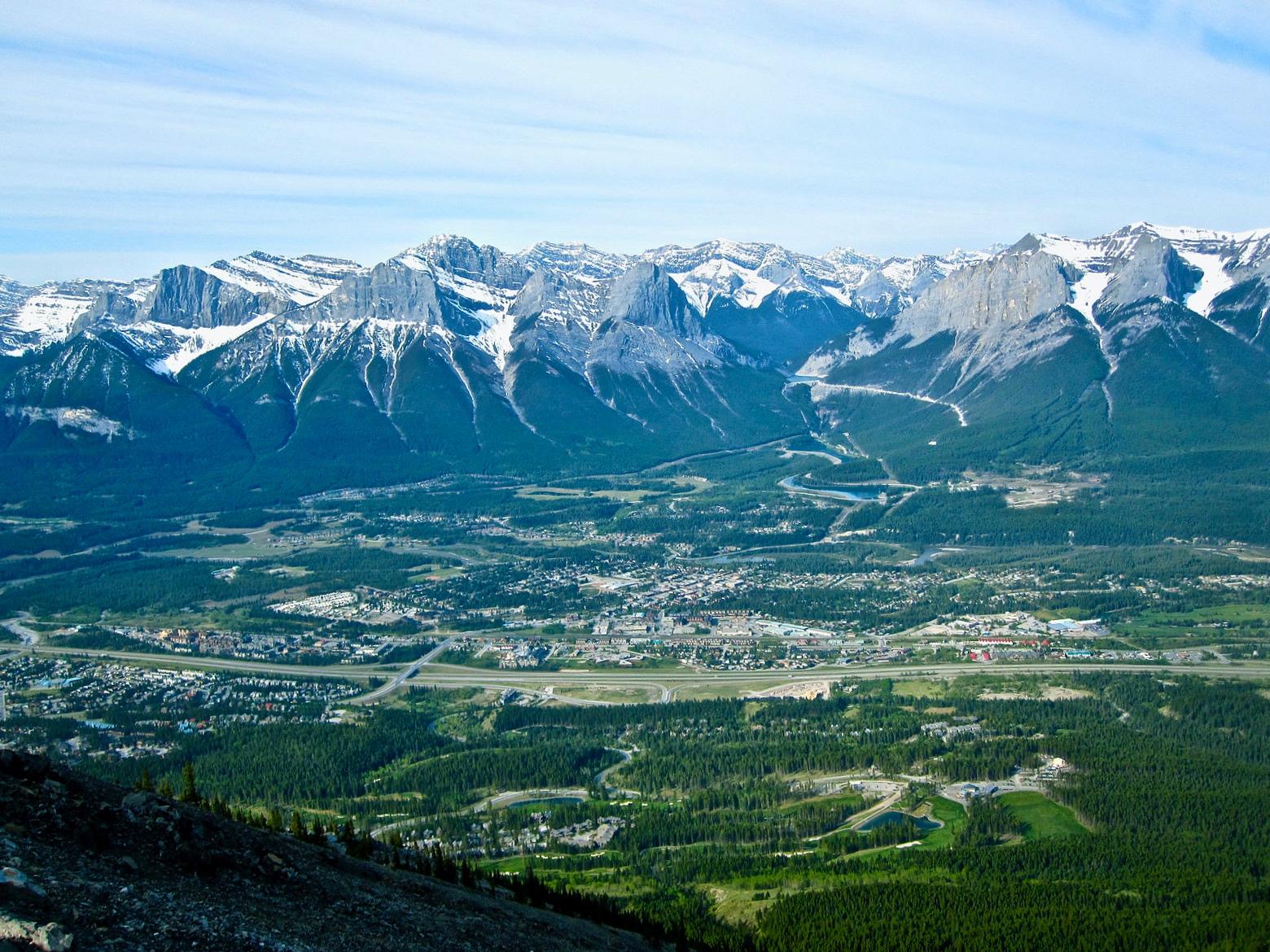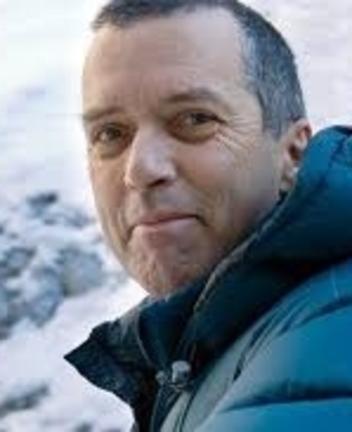Back to StoriesNo, Human Development Does Not "Create" Wildlife Corridors
February 18, 2021
No, Human Development Does Not "Create" Wildlife CorridorsIn op-ed, former superintendent of Canada's oldest national park calls out development scheme that has many parallels in Greater Yellowstone
EDITOR'S NOTE: Is it possible in still-healthy wildland ecosystems for humans to develop and recreate our way to better outcomes for wildlife conservation? When assertions are made about "balance" being achieved between ecology, economy and recreational access, how often does that balance come at the expense of wildlife that, with each new bargain struck under the guise of "collaboration," seems to incrementally lose more habitat? Below is an observation submitted by former Banff National Park Superintendent, biologist and writer Kevin van Tighem about a controversial proposal to "create" a wildlife corridor in exchange for approval to build thousands of new homes and condos in Canmore, Alberta, gateway to Canada's most famous national park. While van Tighem makes direct reference to the the Three Sisters Mountain Village development plan, he could just as well be alluding to proposals to expand Grand Targhee Resort on the west side of the Tetons, Snow King Ski Area in Jackson Hole or numerous other development proposals in Greater Yellowstone.
by Kevin Van Tighem
Here in Canmore, the community is about to have a discussion about a massive real estate development.
But first, some background: I started my career working with colleagues from the Canadian Wildlife Service, Canadian Forestry Service and Alberta Institute of Pedology doing a landscape classification and wildlife inventory of Banff and Jasper national parks.
That was where I first learned to look at how landforms work, how vegetation evolves over time, and where wildlife — from amphibians and birds through shrews and voles to the larger carnivores and ungulates — choose to live out their lives. Maybe that’s why there’s often an ache in my heart when I look at land; I see wounds that aren’t necessarily obvious to others.
I spent much of the rest of my working career in landscape ecology and conservation biology before retiring with my wife to Canmore, Alberta in 2011 where we bought a small home that we actually live in — unlike so many other residences in this town.
When I started my career in the 1970s I lived for a while in Tepee Town, when Canmore was still a recovering coal town. The Three Sisters lands were undeveloped. The Benchlands and Cougar Creek were undeveloped. It was a place that still fit inside nature. Since then, however, it has become a place where nature has trouble fitting in at all.
The fate, and trials and tribulations, of Grizzly Bear 148 is only one recent example of the degree to which human use now dominates this valley, even with the seeming abundance of wild space here.
We tend to take things for granted; to assume that because they are there today they will always be there. I used to assume the burrowing owls and curlews that I watched as a child in the prairie east of Calgary would always be there. They are gone, even the prairie is gone; it’s all city now, all the way out to Chestermere.
When I saw my first caribou in Jasper they seemed to be quintessential living emblems of that park; caribou became part of how I knew that place during my wildlife inventory days. They’re gone from most of the places where I used to see them; Jasper has a hollow in its heart now.
Animals don’t happen by accident; they need habitat. Some habitats are more critical than others — alluvial and riparian areas, for example, and deciduous woods, native grasslands, south-facing benches. And wildlife needs space and security and room to move without the stress of constant encounters with things that make them uneasy. Like us. Especially like our dogs. They rely on predictable patterns in the environment — patterns of weather, seasonality, the presence of other species, the availability of food.
"Animals don’t happen by accident; they need habitat. Some habitats are more critical than others — alluvial and riparian areas, for example, and deciduous woods, native grasslands, south-facing benches. And wildlife needs space and security and room to move without the stress of constant encounters with things that make them uneasy. Like us." —Kevin van Tighem
Animals do not need “wildlife corridors." The concept of a wildlife corridor has an ecological basis — in fragmented lands, corridors with intact vegetation and low human use enable wary or nervous animals to get around, albeit with a constant level of stress — but it’s mostly a planner’s conceit; a handy device to enable us to pretend that we are providing for nature while filling the landscape full of our stuff. Animals don’t need wildlife corridors; what they need is habitat and space.
If we are who we seem to say we are in this valley, we like living among wild animals. We take pride in saying that there are grizzly bears here, that elk sometimes walk down the street and coyotes sing in the night and that living in Canmore and the Bow Valley is living in the heart of nature. But none of those things are assured if nature starts to run out of space.
That’s why, as an ecologist and a Canmore resident and a thinking citizen of the 21st century, I oppose the latest iteration of the Three Sisters Mountain Village concept. It’s not a village. It’s a development play, for profit. And there’s nothing wrong with profit, earned by honest endeavor and fair play. [Read essay here from Yellowstone to Yukon Conservation Initiative).
But buying land on speculation is taking on risk that there won’t be any profit, or that the profits might not be as high as hoped. So I also don’t feel that anyone in this valley owes anything to the developers who want to profit from yet another wave of urban sprawl. On the other hand, I do feel that we all owe something to nature, considering how much it enriches our daily lives (and helps developers market the subdivisions with which they are replacing it.)
"Buying land on speculation is taking on risk that there won’t be any profit, or that the profits might not be as high as hoped. So I also don’t feel that anyone in this valley owes anything to the developers who want to profit from yet another wave of urban sprawl. On the other hand, I do feel that we all owe something to nature, considering how much it enriches our daily lives and helps developers market the subdivisions with which they are replacing it." —van Tighem
That means leaving the wildlife habitat that survives in this valley as intact as possible. If we are talking about corridors, we need to be talking about people corridors, not wildlife corridors.
Wildlife shouldn’t be forced to squeeze into narrow gaps between houses, dodging dog walkers, bicyclists and free-range kids in stress-filled efforts to get from one patch of cover to the next. Because at some point, that will stop working for grizzly bears, wolves, moose and other animals who already spend too much time dodging us. Wolves are already mostly absent, even at the current level of development.
"If Canmore wants to believe itself to be a community where people and nature coexist, then that requires some self-imposed limitations. We have more options than other species. On where we recreate and how, certainly, but also on where we develop and why."
In this 21st century, nature is under siege from climate change, habitat fragmentation and the massive footprint of a human population that seems to insist on all the trappings of prosperity instead of asking how much we can do without. If Canmore wants to believe itself to be a community where people and nature coexist, then that requires some self-imposed limitations. We have more options than other species. On where we recreate and how, certainly, but also on where we develop and why.
Every remaining square meter of alluvial habitats in this valley, of aspen forest, grassland, willow wetland and Douglas fir forest needs to be left wild. We’ve already taken more than our fair share. Or we should just start calling ourselves Calgary. If developers want more, they should have a better reason than to sell more high-end weekend retreats that sit empty half the year in cul-de-sacs that echo with emptiness and reek of wasted wealth. And they should look for places without elk, bear or marten tracks, without birdsong and without game trails.
Because if we don’t reel Three Sisters in, that’s what the whole place could become.
EDITOR'S NOTE: By signing up for Mountain Journal's free newsletter, you'll never miss a story. Simply click here and you can get our dispatch every week. MoJo welcomes comments in response to all of the stories we publish, including rebuttals from those who disagree. If you disagree with Kevin van Tighem's concerns about the growing impacts of development on wildlife corridors, tell us why. MoJo will consider publishing your views, and post them beneath this op-ed, so long as they are based on facts.



